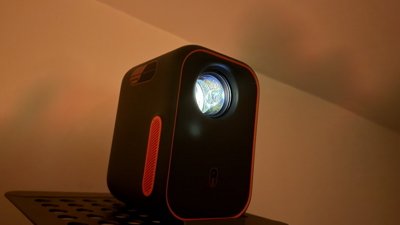Still one more class-action lawsuit is claiming that the iPhone not only fails to live up to 3G speeds, but that it also prematurely develops hairline cracks in its outer casing.
The suit is the second to be filed this week (among many others over the past several months) claiming the iPhone 3G performs poorly when connected via 3G because it "demand(s) too much power from the 3G bandwidths."
The plaintiffs also blame AT&T's infrastructure and name the exclusive carrier of the Apple-built smartphone as a co-defendant, claiming AT&T's system can't cope with the "overwhelming 3G signal" of the sheer number of iPhones sold.
They cite an Associated Press article on tests by Swedish engineering weekly Ny Teknik that concluded some handsets aren't sensitive enough to 3G signals and boost their signals to compensate, creating the network conflict. Subsequent tests, however, showed no hardware issue and instead suggested it was a network congestion issue.
Unusually, the suit cites as proof of poor 3G performance the August 2008 ruling in the United Kingdom requiring Apple to stop advertising the iPhone's ability to access "all parts of the Internet." However, that ruling did not consider 3G speeds, dealing instead with the iPhone's lack of Java and Flash support. Nonetheless, the UK court's decision is cited as an example of the iPhone not functioning properly "on the 3G network."
A Wired blog post is also part of the plaintiffs' evidence, quoting AT&T spokesman Brad Mays as saying iPhones were "performing great" even at the height of reported slowdowns and connection drops.
However, besides these typical claims, the suit is rare in alleging faulty manufacturing of the exterior plastic case.
"The iPhones have had well-known and documented issues regarding the premature 'wear-and-tear' of the iPhones' housing," the complaint says, "including the formation of hairline cracks in the iPhones' casing."
Although these issues weren't an issue with the original iPhone, which came with an aluminum backing, the iPhone 3G comes with a black or white hard plastic back that, just after launch, had triggered multiple complaints of stress around key points of the handsets. According to the lawsuit, cracks form "around the camera, near the volume rocker," and in other areas reported by users.
The company is believed to have knowingly shipped phones with the flaw even after it became an apparent problem. The suit spends several pages reproducing anonymous comments from Apple's forums and various other websites to show when the complaints first surfaced.
"I should've stuck to my old iPhone, the one with the aluminum back that probably wont crack," an Engadget reader comments. "I've never doubted the build quality of Apple products before but now I'm beginning to question it heavily."
Moreover, hardware defects aren't the only problems mentioned in the complaint. The plaintiffs list a raft of problems caused by the iPhone 2.0 software update and the subsequent 2.1 update, which they claim did not fix the original problems of "crashes, 'bricked' handsets, slower applications, a lag in the virtual keyboard, internet connection issues, and spotty call reception."
And while Apple itself positioned iPhone 2.1 as a fix for these key problems, the individuals filing the suit point to reports where many of the problems either weren't immediately fixed or had even "gotten worse" after the update. iPhone 2.2 has since appeared.
One of AppleInsider's own August 2008 reports is also presented as evidence that Apple was aware it had released a tarnished product. A personal email to a customer from Apple chief executive Steve Jobs acknowledged a bug and that a fix was enroute.
The representatives in the class are demanding typical damages but, if victorious, would also require Apple and AT&T to give up any profits earned by way of "misleading" advertising and post a disclaimer on the iPhone's packaging as well as all advertising materials. They are suing for at least $5 million, the established threshold under legal statutes.
 Zach Spear
Zach Spear






-m.jpg)






 Wesley Hilliard
Wesley Hilliard
 Malcolm Owen
Malcolm Owen
 Andrew Orr
Andrew Orr
 William Gallagher
William Gallagher
 Sponsored Content
Sponsored Content
 Christine McKee
Christine McKee

 Thomas Sibilly
Thomas Sibilly






50 Comments
These things are a dime a dozen-and further proof the USA has too many whiners and too many lawyers.
These things are a dime a dozen-and further proof the USA has too many whiners and too many lawyers.
Agree... We need more companies like Apple that do a pretty good job of fixing problems when/if they do occur and less of these deadbeats that just want millions because Apple is profitable.
Another lawsuit coming....
My white iPhone is discoloring!
The white is turning dark now only after 3 mths!I can't wait for Apple to respond to this.... Hopefully someone sues them before me.Apple had the same problems with the white Macbooks and did nothing about it. Why did they release a white iPhone after that whole ordeal?I never knew about the white discoloring until I googled it and found out about the Macbooks too.
Apple should just stop selling products in Texas. Let them go out of state to pick up their Apple gear, then Apple is not legally bound to lawsuits from there... which seem to be most of them.
The news about the plastic backs cracking sucks.
Plastic is drastic... they should go back to metal.
Another lawsuit coming....
My white iPhone is discoloring!
The white is turning dark now only after 3 mths!I can't wait for Apple to respond to this.... Hopefully someone sues them before me.Apple had the same problems with the white Macbooks and did nothing about it. Why did they release a white iPhone after that whole ordeal?I never knew about the white discoloring until I googled it and found out about the Macbooks too.
Yet another whiner!
It is a PHONE not a work of art!!!
Do you sue because your jeans fade when you wash them.
These people who sue over these petty and childish and fictional things needs to grow up PLUS the American Legal system must be reformed as it is a disgrace.